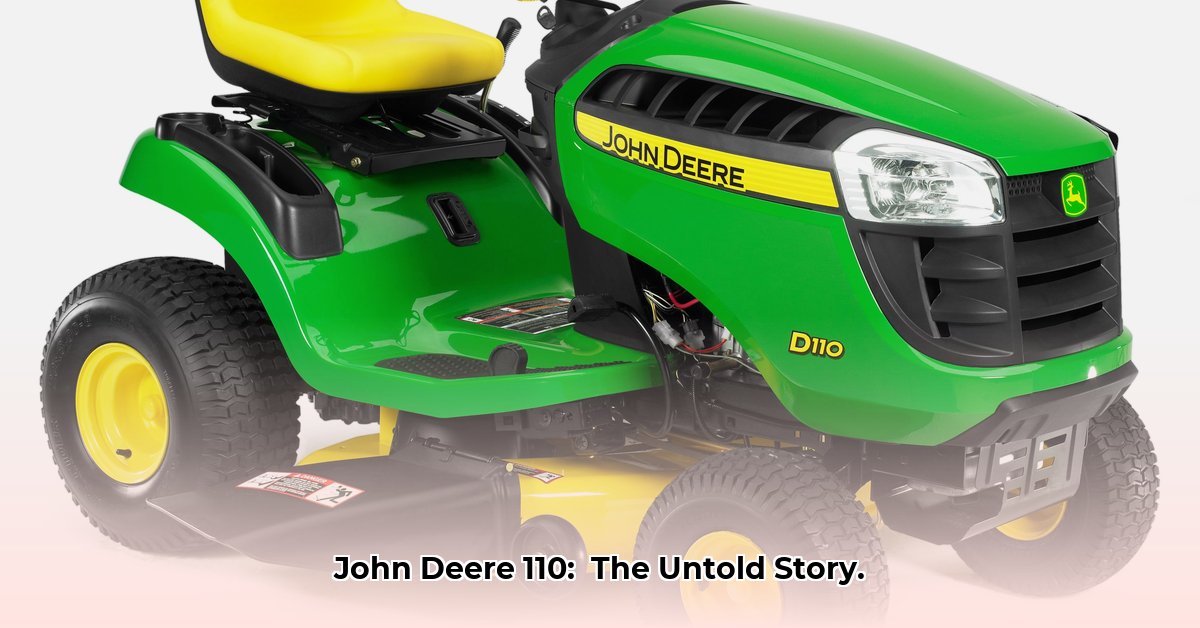
The John Deere Model 110, a compact tractor produced between 1963 and 1974, significantly impacted small-scale agriculture and landscaping. More than just a lawnmower, it democratized access to mechanization, boosting efficiency while raising important questions about technological progress and environmental responsibility. This article explores its historical context, technological features, societal impact, and enduring legacy within the framework of sustainable practices. For more detailed specifications, check out this helpful resource.
A Small Tractor, a Big Impact: Functionality and Features
The John Deere 110, powered by a reliable 7 or 8-horsepower Kohler engine, offered surprising power in a compact design. Its versatility was key; readily interchangeable attachments, including mower decks, snow blowers, and blades, transformed it into a year-round tool. Options like 3- and 4-speed gears and a hydraulic lift further enhanced its user-friendliness and efficiency. This adaptability was revolutionary for smaller farms and homeowners, offering power previously inaccessible or unaffordable. Did this increased accessibility change the landscape of agricultural practices? Absolutely.
Democratizing Mechanization: Bringing Power to the People
Before the 110, heavy machinery was largely confined to commercial agriculture. The 110's relatively low cost broadened access to mechanization, empowering small-scale farmers and homeowners alike. This increase in accessibility directly translated into heightened productivity and potentially improved food security for rural communities. This democratization of agricultural technology is a significant, often overlooked, aspect of the 110's legacy. How did this accessibility shift the balance of power within agricultural communities?
The Environmental Story: A Different Time, Different Priorities
Assessing the 110's environmental impact requires considering the historical context. While modern sustainability concerns were less prominent in the 1960s and 70s, the tractor's gasoline engine undoubtedly contributed to emissions and raised disposal challenges. However, understanding the limitations of the era is crucial to avoid imposing current standards anachronistically. What adjustments are needed to accurately assess a technology's environmental impact across different time periods?
A Stepping Stone to the Future: Influencing Modern Design
The John Deere 110's influence extends beyond its production years. Its adaptable attachments, user-friendly design, and compact size served as a blueprint for subsequent models. Elements of its design and functionality are still evident in modern tractors, highlighting its enduring impact on agricultural and landscaping machinery. Its legacy continues to shape the field. How has the 110’s design philosophy affected modern agricultural technology?
Weighing the Pros and Cons: A Balanced Perspective
The John Deere 110’s legacy is multifaceted:
| Feature | Advantages | Disadvantages |
|---|---|---|
| Efficiency | Increased efficiency in various tasks, saving time and labor. | Higher fuel consumption and emissions compared to modern, eco-friendly options. |
| Accessibility | Made mechanization affordable and accessible to a wider range of users. | |
| Environmental | Increased productivity and potentially improved food security. | Higher emissions and less consideration for sustainable materials. |
| Technological | Influenced the design of subsequent agricultural and landscaping machinery. | Manufacturing practices and disposal of components presented challenges. |
Long-Term Consequences and Lessons Learned
The John Deere 110 serves as a powerful case study in the evolution of agricultural technology. It highlights the trade-offs inherent in technological advancements, demonstrating how increased efficiency can sometimes conflict with environmental considerations. Its legacy compels us to analyze past innovations through a modern lens, informing the development of more sustainable technologies for the future. What lessons can modern engineers and designers learn from the successes and failures of the John Deere 110?
Key Takeaways:
- The John Deere 110 democratized access to mechanization, significantly impacting small-scale farming and landscaping.
- Its environmental impact must be considered within the context of its time, acknowledging both its contributions and limitations.
- Comparing the 110 to modern equipment reveals the progress made in sustainability and efficiency.
- Studying the 110 provides valuable insights into the complex relationship between technological innovation, societal needs, and environmental responsibility.